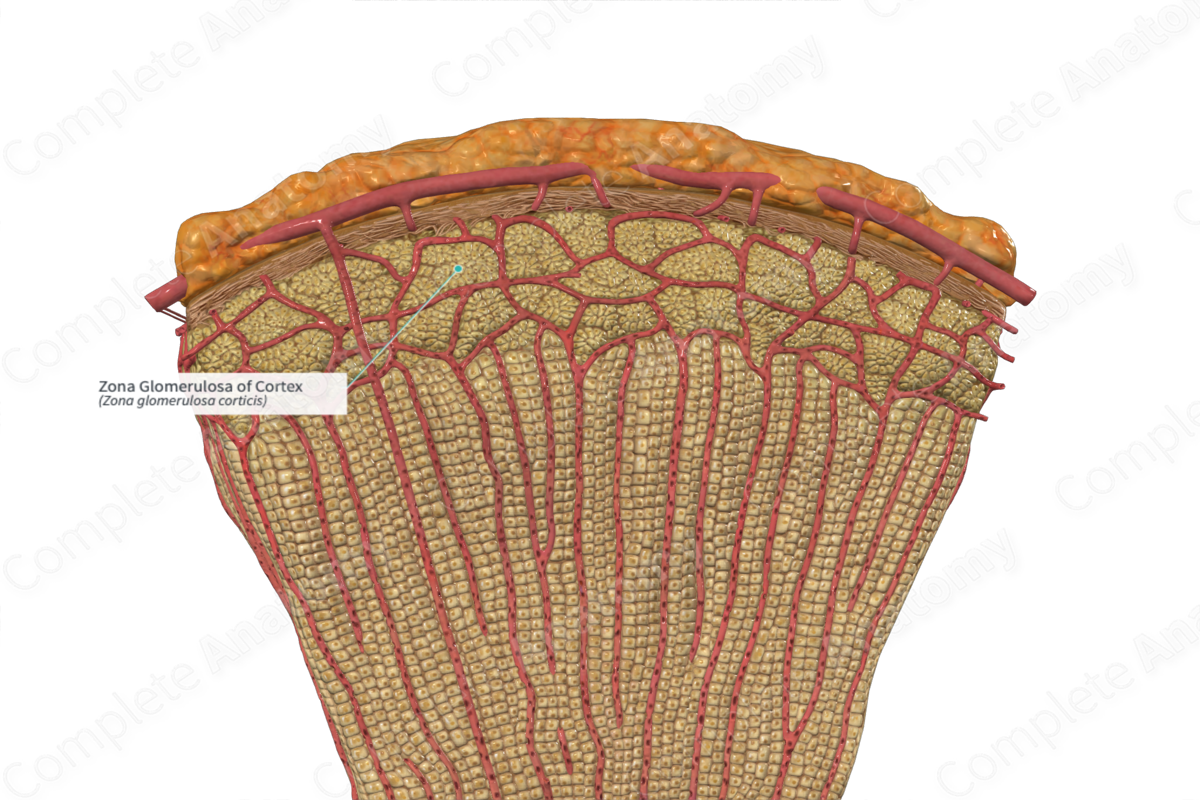
Quick Facts
The zona glomerulosa is the thin outer layer of the suprarenal cortex, contiguous with the capsule; it is the source of aldosterone (Dorland, 2011).
Related parts of the anatomy
Structure and/or Key Feature(s)
The cortex of the suprarenal gland is comprised of three distinct morphological zones, the zona glomerulosa, zona fasciculata, and the zona reticularis. These lie above the medulla of the suprarenal gland.
The zona glomerulosa is the outer zone of the cortex and comprises nearly 10% of the cortical mass. It consists of a thin area of small, polyhedral cells which are clumped together in groups. Inside each cell, prominent organelles include a large amount of smooth endoplasmic reticulum present in the basophilic cytoplasm, as well as a small number of lipid droplets. These store cholesterol, the main precursor of steroid biosynthesis. These are important organelles as they relate to the cell’s primary function (Pocock, Richards and Richards, 2013).
Anatomical Relations
The zona glomerulosa is situated between the capsule and the zona fasciculata of the suprarenal gland. Numerous branches of the capsular plexus, situated just below the capsule, enter the zona glomerulosa to form an arterial network that extends through the cortex.
Function
The primary function of the cortex is to produce steroid hormones. In particular, the zona glomerulosa secretes mineralocorticoids such as aldosterone, a component of the renin-angiotensin-aldosterone-system (RAAS). These play a crucial role in maintaining blood pressure, blood volume, and electrolyte homeostasis (Bollag, 2014).
Clinical Correlates
—Primary hyperaldosteronism (Conn’s syndrome, bilateral suprarenal hyperplasia)
References
Bollag, W. B. (2014) Regulation of aldosterone synthesis and secretion. Compr Physiol, 4(3), 1017-55.
Dorland, W. (2011) Dorland's Illustrated Medical Dictionary. 32nd edn. Philadelphia, USA: Elsevier Saunders.
Pocock, G., Richards, C. D. & Richards, D. A. (2013) Human Physiology, 4 edition. OUP Oxford.
